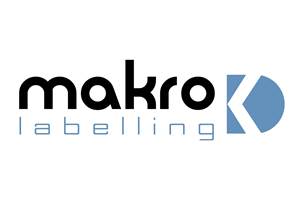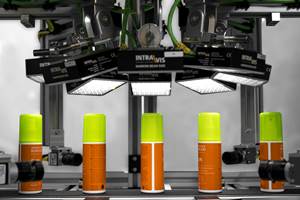'Global' Ultrasonic Power Supplies Boast 'World First' Innovations
Close Up: Welding
Branson Ultrasonics Corp., Danbury, Conn., has just introduced its first “global” series of ultrasonic welding power supplies for automated assembly systems, which are said to incorporate several “first-in-the-world” capabilities.
Branson Ultrasonics Corp., Danbury, Conn., has just introduced its first “global” series of ultrasonic welding power supplies for automated assembly systems, which are said to incorporate several “first-in-the-world” capabilities. Branson’s DCX digital power supplies for equipment OEMs and automation integrators were developed to meet the trend toward “globalization of automation,” according to Jeffrey Frantz, director of marketing and product development. “In the last five years, especially, we have seen increasingly common transfer of automated manufacturing systems around the globe—either from equipment OEMs to overseas customers or from manufacturers on one continent setting up a satellite plant on another continent. With the DCX series, we decided on a ‘universal’ feature set that makes features requested by customers in particular locations available to customers globally.”
USER PROGRAMMABILITY IS KEY
For example, some European customers have requested the ability for quick starts of the welding cycle by ramping up the horn from zero to full amplitude in the minimum amount of time in order to improve cycle rates. The DCX series accommodates this with programmable starting ramp times—an industry first, according to Frantz. He explains that power supplies are commonly preset to a default amplitude ramp-up time of 80 millisec. If the user desires a welding cycle of only 100 millisec, it makes a big difference if the ramp time can now be programmed by the user for just 20 millisec.
This is just one example of a number of settings that formerly were built into the power supply through firmware or settable via dipswitches, which now are more accessible to the user via digital programmability. Another example is the ability to increase or decrease horn amplitude instantaneously at any point during the weld. For example, amplitude could be higher at the start of the weld and reduced after the plastic starts to melt in order to gain finer control. Although this capability was already available in Branson’s benchtop 2000X power supplies, Frantz says this is the first time such a feature has been offered in OEM/automation products.
User programmability is enabled by the industry’s first service port that allows connection to a laptop or to a plant network for setup and diagnostics either at the machine or remotely. This is a standard Ethernet port and no special software is required.
Also new is improved thermal management on the DCX series by dividing the enclosure into two separate chambers for the electronics and the heat-generating components. This eliminates the need for fans in the electronics compartment to draw in cool air—along with contaminants. The result is less downtime for cleaning, says Frantz.
Another novel feature is what’s said to be the best power density in the industry. Whereas power supplies in the past tended to be packaged in the same size enclosure regardless of power level, Branson “squeezes” the new DCX units into the most compact package possible for the power level. Power levels range from 400 W for a 40-kHz version to 4 kW for a 20-kHz version—up from 3.3 kW previously. (There are also 30-kHz versions.) DCX units with the lowest power level are as much as 50% more compact than before, and even the largest unit is one-third smaller than previous models.
In addition, the DCX units are available in various form factors—horizontal, vertical with side mount, or vertical with rear-plane mount. Other features include Branson’s closed-loop amplitude control and six levels of power-supply protection to help maintain weld quality and extend product life. Learn more about Branson’s DCX units at NPE 2013 in Orlando, Fla., Apr. 1-5, Booth 2151.
Related Content
End-to-End Quality Management For Aseptic PET Beverage Bottling
Sidel introduces Qual-IS comprehensive quality system to merge all QC activities in PET aseptic beverage bottling, from the preform blowing to laboratory management.
Read MoreSidel Acquires Another Label Machinery Firm
Makro Labelling adds low- to medium-speed technologies.
Read MoreAdvanced Inspection of Bottles and Labels
NPE2024: Intravis shows new system for full label inspection on round, randomly oriented bottles; and redesigned bottle inspection system with more modular design.
Read MoreCobot Takeout System for Shuttle Machines
NPE2024: Proco Machinery upgrades its Robopik bottle takeout system for shuttle blow molders with the addition of a collaborative robot.
Read MoreRead Next
Beyond Prototypes: 8 Ways the Plastics Industry Is Using 3D Printing
Plastics processors are finding applications for 3D printing around the plant and across the supply chain. Here are 8 examples to look for at NPE2024.
Read MoreLead the Conversation, Change the Conversation
Coverage of single-use plastics can be both misleading and demoralizing. Here are 10 tips for changing the perception of the plastics industry at your company and in your community.
Read MoreFor PLASTICS' CEO Seaholm, NPE to Shine Light on Sustainability Successes
With advocacy, communication and sustainability as three main pillars, Seaholm leads a trade association to NPE that ‘is more active today than we have ever been.’
Read More






















